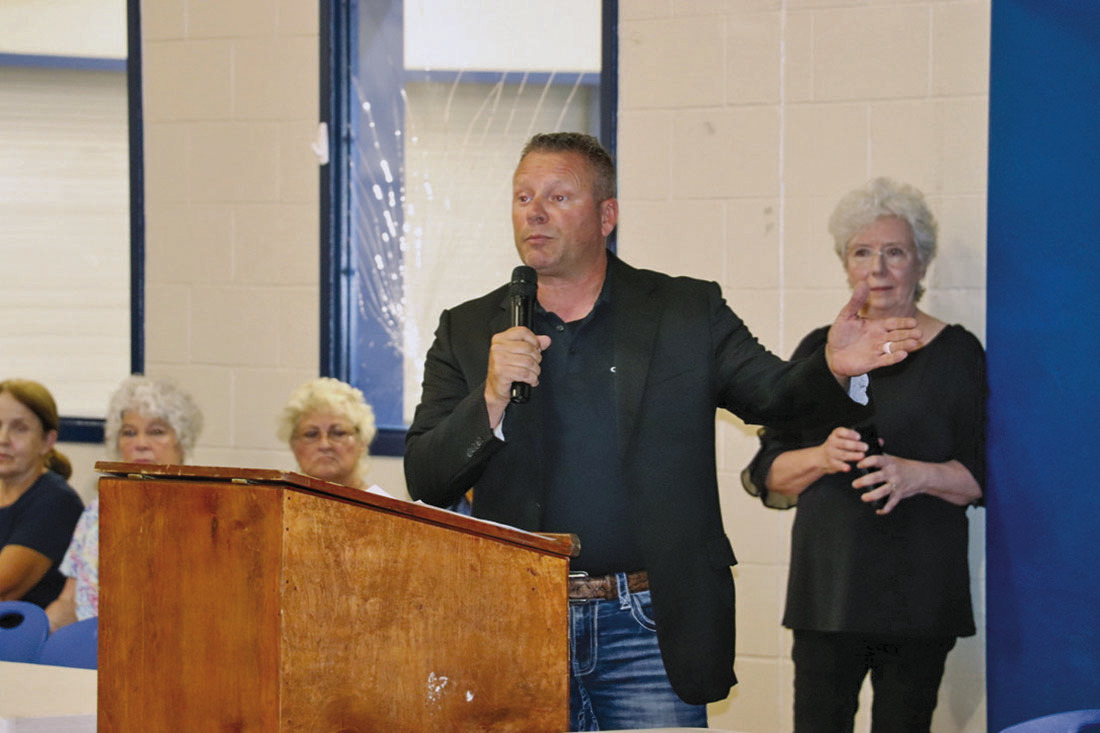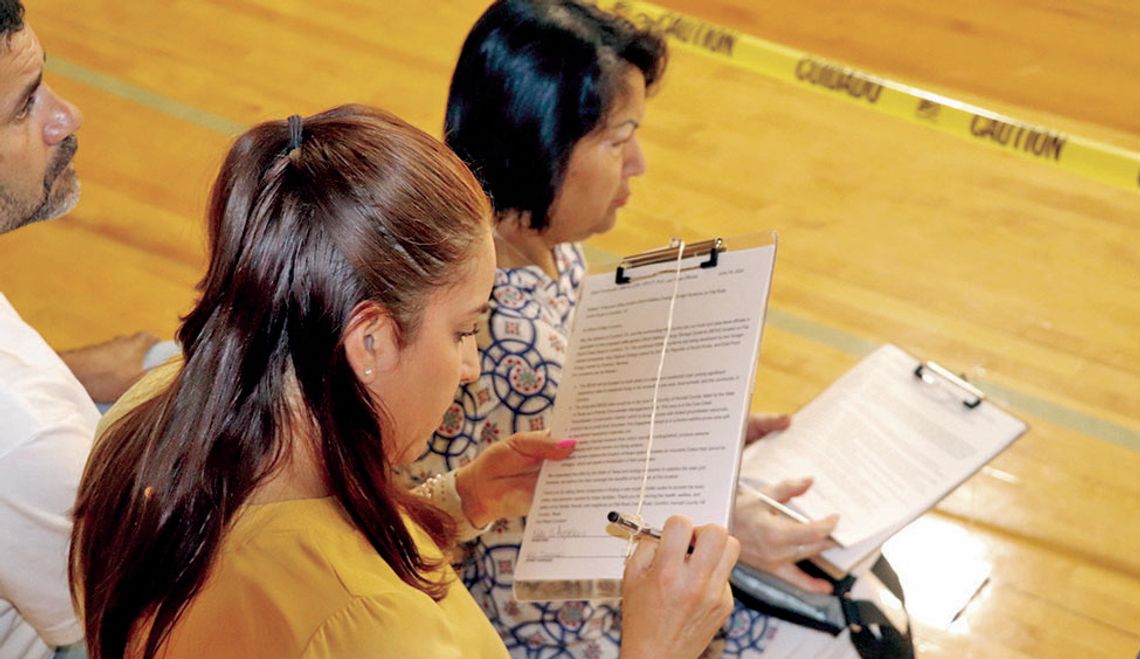Kendall County Fire Marshal Brady Constantine told a crowd of Kendall County residents Tuesday any plans for construction of battery energy storage systems, or BESS, will be heavily scrutinized once submitted to his office.
At least three international firms, including one based in South Korea and one in Norway, have rights to land along Flat Rock Creek Road in Kendall County near the Lower Colorado River Authority transfer station, where they plan to build BESS facilities.
Betty Poyo, whose family has operated a working livestock ranch, Flat Rock Ranch, for over 100 years, explained the relevance of the BESS requests to the crowd in the Comfort high School gymnasium.
If constructed, she said, these BESS facilities contain thousands of lithium- ion battery cells, ranking among some of the largest in Texas.
She acquainted the audience with the phrase “thermal runaway,” which is a primary risk of lithium-ion batteries in a BESS facility.
“A thermal runaway is a chain reaction in which a damaged battery begins to release energy in the form of heat, causing the battery to enter a further uncontrollable self-heating state,” she said.
The danger is that a single component can have a domino effect, compromising the safety of the entire system.
“This can result in fires and explosions, discharging toxic gas and shrapnel at extremely high temperatures, toxic smoke and fire,” she said. “A thermal runaway poses substantial risk to property, the environment and human safety.”
A thermal runaway fire cannot be extinguished with water, it must be left to burn itself out. Surrounding buildings are doused with water, which is necessary to cool surrounding batteries and structures to keep them from exploding and catching fire, and to attempt to control the resulting toxic smoke.
Several other Flat Rock Creek Road residents spoke, unsure of the future values of their property — expressing their thoughts on possibly losing seven and eight-generational ownership that could all be lost in “a battery blaze.”
A recent lithium-ion BESS facility fire in San Diego burned for 17 days and required Cal Fire to pump 8 million gallons of water — not to extinguish the fire, but to cool the surrounding buildings and to control the released toxic smoke.
According to the San Diego Union-Tribune, evacuation orders and warnings were put into effect in the immediate vicinity when the May 15 blaze first broke.
Flat Rock Creek Road is a dead-end county road with no evacuation route for the majority of its residents who live beyond these BESS facilities, Poyo said.
“We, the residents of Flat Rock Creek Road and Comfort, will literally be living with these facilities in our backyards,” she said. “Without the proper restrictions and regulations to supervise these facilities, we are all at risk.”
Constantine told the crowd that recent legislation passed by the Kendall County Commissioners Court will require any BESS company to ensure Kendall County firefighters are properly trained and equipped to battle any blaze that would occur at such sites.
The commissioners recently adopted Chapter 12 of the 2024 International Fire Code, which focuses on energy storage systems, “the highest code currently out that can be adopted by a county.”
As part of that code, he said a hazardous mitigation analysis must be conducted before a hazardous mitigation plan can be submitted — which must include ingress and egress plans for EMS, firefighting and law enforcement officials.
He said those plans must go through the fire marshal’s office before any work can be done, any ground broken, on any property.
“At this time, to date, we currently do not have any submittals of these projects yet,” he said.
Constantine said he has reached out to several other fire inspectors “and together, we’re going to go through those fire protection plans with a fine-toothed comb to hold all these companies to the highest codes” once a company applies.
“What I can tell you is that nothing can happen until all the plans have been submitted,” he said. “They can’t break ground, they can’t do anything with roads, they can’t do anything until we have a full set of plans.”
Meeting organizers circulated a letter that more than 150 attendees signed, expressing the very concerns talked about during the meeting. They will be sent to the LCRA board of directors, members of the Electric Reliability Council of Texas (ERCOT), the Public Utilities Commission and various state officials, including Gov. Greg Abbott and members of the Texas Legislature.

Kendall County Precinct 4 Commissioner Chad Carpenter addresses attendees to a June 18 meeting focused on battery energy storage system firms’ attempts to move into Kendall County onto a road in the Comfort area.
Star photo by Jeff B. Flinn







Comment
Comments